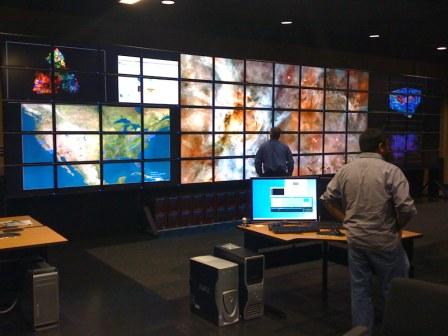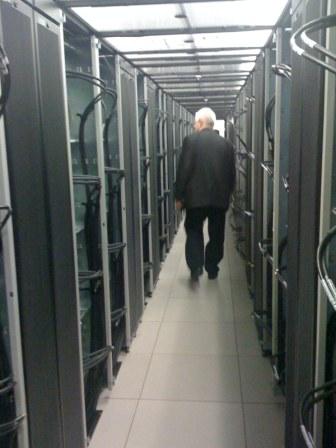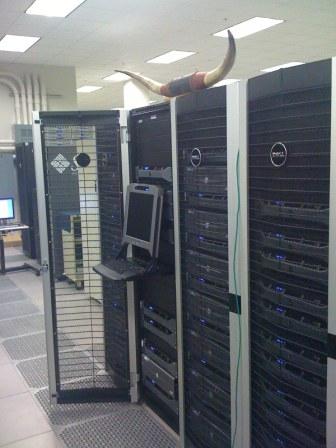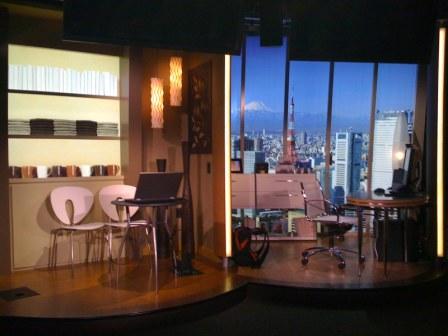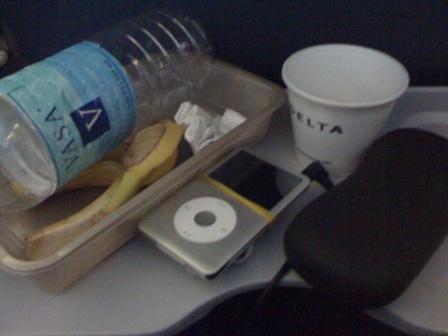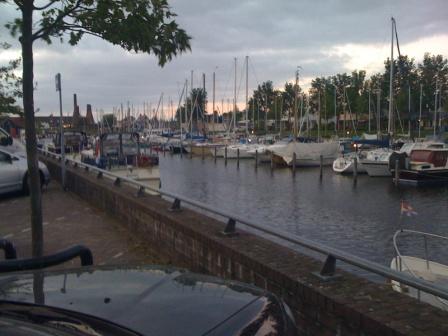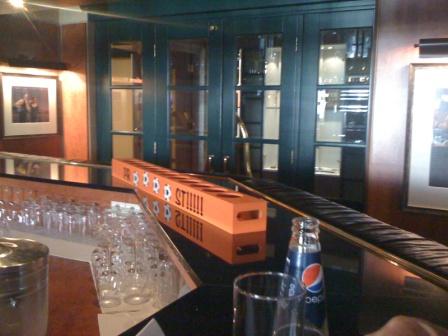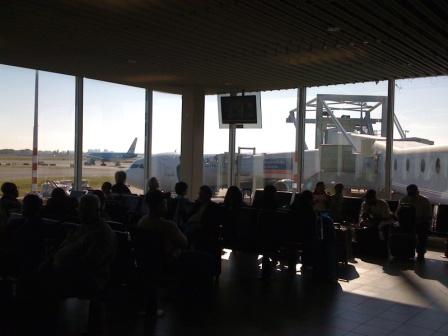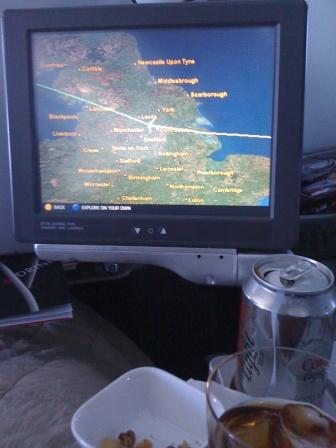There are many different aspects of Green IT along with several myths or misperceptions not to mention missed opportunities.
There is a Green Gap or disconnect between environmentally aware, focused messaging and core IT data center issues. For example, when I ask IT professionals whether they have or are under direction to implement green IT initiatives, the number averages in the 10-15% range.
However, when I ask the same audiences who has or sees power, cooling, floor space, supporting growth, or addressing environmental health and safety (EHS) related issues, the average is 75 to 90%. What this means is a disconnect between what is perceived as being green and opportunities for IT organizations to make improvements from an economic and efficiency standpoint including boosting productivity.
Some IT Data Center Green Myths
Is “green IT” a convenient or inconvenient truth or a legend?
When it comes to green and virtual environments, there are plenty of myths and realities, some of which vary depending on market or industry focus, price band, and other factors.
For example, there are lines of thinking that only ultra large data centers are subject to PCFE-related issues, or that all data centers need to be built along the Columbia River basin in Washington State, or that virtualization eliminates vendor lock-in, or that hardware is more expensive to power and cool than it is to buy.
The following are some myths and realities as of today, some of which may be subject to change from reality to myth or from myth to reality as time progresses.
Myth: Green and PCFE issues are applicable only to large environments.
Reality: I commonly hear that green IT applies only to the largest of companies. The reality is that PCFE issues or green topics are relevant to environments of all sizes, from the largest of enterprises to the small/medium business, to the remote office branch office, to the small office/home office or “virtual office,” all the way to the digital home and consumer.
Myth: All computer storage is the same, and powering disks off solves PCFE issues.
Reality: There are many different types of computer storage, with various performance, capacity, power consumption, and cost attributes. Although some storage can be powered off, other storage that is needed for online access does not lend itself to being powered off and on. For storage that needs to be always online and accessible, energy efficiency is achieved by doing more with less—that is, boosting performance and storing more data in a smaller footprint using less power.
Myth: Servers are the main consumer of electrical power in IT data centers.
Reality: In the typical IT data center, on average, 50% of electrical power is consumed by cooling, with the balance used for servers, storage, networking, and other aspects. However, in many environments, particularly processing or computation intensive environments, servers in total (including power for cooling and to power the equipment) can be a major power draw.
Myth: IT data centers produce 2 to 8% of all global Carbon Dioxide (CO2) and carbon emissions.
Reality: Thus might be perhaps true, given some creative accounting and marketing math in order to help build a justification case or to scare you into doing something. However, the reality is that in the United States, for example, IT data centers consume around 2 to 4% of electrical power (depending on when you read this), and less than 80% of all U.S. CO2 emissions are from electrical power generation, so the math does not quite add up. The reality is this, if no action is taken to improve IT data center energy efficiency, continued demand growth will shift IT power-related emissions from myth to reality, not to mention cause constraints on IT and business sustainability from an economic and productivity standpoint.
Myth: Server consolidation with virtualization is a silver bullet to address PCFE issues.
Reality: Server virtualization for consolidation is only part of an overall solution that should be combined with other techniques, including lower power, faster and more energy efficient servers, and improved data and storage management techniques.
Myth: Hardware costs more to power than to purchase.
Reality: Currently, for some low-cost servers, standalone disk storage, or entry level networking switches and desktops, this may be true, particularly where energy costs are excessively high and the devices are kept and used continually for three to five years. A general rule of thumb is that the actual cost of most IT hardware will be a fraction of the price of associated management and software tool costs plus facilities and cooling costs. For the most part, at least as of this writing, small standalone individual hard disk drives or small entry level volume servers can be bought and then used in locations that have very high electrical costs over a three to five year time frame.
Regarding this last myth, for the more commonly deployed external storage systems across all price bands and categories, generally speaking, except for extremely inefficient and hot running legacy equipment, the reality is that it is still cheaper to power the equipment than to buy it. Having said that, there are some qualifiers that should also be used as key indicators to keep the equation balanced. These qualifiers include the acquisition cost if any, for new, expanded, or remodeled habitats or space to house the equipment, the price of energy in a given region, including surcharges, as well as cooling, length of time, and continuous time the device will be used.
For larger businesses, IT equipment in general still costs more to purchase than to power, particularly with newer, more energy efficient devices. However, given rising energy prices, or the need to build new facilities, this could change moving forward, particularly if a move toward energy efficiency is not undertaken.
There are many variables when purchasing hardware, including acquisition cost, the energy efficiency of the device, power and cooling costs for a given location and habitat, and facilities costs. For example, if a new storage solution is purchased for $100,000, yet new habitat or facilities must be built for three to five times the cost of the equipment, those costs must be figured into the purchase cost.
Likewise, if the price of a storage solution decreases dramatically, but the device consumes a lot of electrical power and needs a large cooling capacity while operating in a region with expensive electricity costs, that, too, will change the equation and the potential reality of the myth.
Tiered Energy Sources
Given that IT resources and facilitated require energy to power equipment as well as keep them cool, electricity are popular topics associated with Green IT, economics and efficiency with lots of metrics and numbers tossed around. With that in mind, the U.S. national average CO2 emission is 1.34 lb/kWh of electrical power. Granted, this number will vary depending on the region of the country and the source of fuel for the power-generating station or power plant.
Like IT tiered resources (Servers, storage, I/O networks, virtual machines and facilities) of which there are various tiers or types of technologies to meet various needs, there are also multiple types of energy sources. Different tiers of energy sources vary by their cost, availability and environmental characteristics among others. For example, in the US, there are different types of coal and not all coal is as dirty when combined with emissions air scrubbers as you might be lead to believe however there are other energy sources to consider as well.
Coal continues to be a dominant fuel source for electrical power generation both in the United States and abroad, with other fuel sources, including oil, gas, natural gas, liquid propane gas (LPG or propane), nuclear, hydro, thermo or steam, wind and solar. Within a category of fuel, for example, coal, there are different emissions per ton of fuel burned. Eastern U.S. coal is higher in CO2 emissions per kilowatt hour than western U.S. lignite coal. However, eastern coal has more British thermal units (Btu) of energy per ton of coal, enabling less coal to be burned in smaller physical power plants.
If you have ever noticed that coal power plants in the United States seem to be smaller in the eastern states than in the Midwest and western states, it’s not an optical illusion. Because eastern coal burns hotter, producing more Btu, smaller boilers and stockpiles of coal are needed, making for smaller power plant footprints. On the other hand, as you move into the Midwest and western states of the United States, coal power plants are physically larger, because more coal is needed to generate 1 kWh, resulting in bigger boilers and vent stacks along with larger coal stockpiles.
On average, a gallon of gasoline produces about 20 lb of CO2, depending on usage and efficiency of the engine as well as the nature of the fuel in terms of octane or amount of Btu. Aviation fuel and diesel fuel differ from gasoline, as does natural gas or various types of coal commonly used in the generation of electricity. For example, natural gas is less expensive than LPG but also provides fewer Btu per gallon or pound of fuel. This means that more natural gas is needed as a fuel to generate a given amount of power.
Recently, while researching small, 10 to 12 kWh standby generators for my office, I learned about some of the differences between propane and natural gas. What I found was that with natural gas as fuel, a given generator produced about 10.5 kWh, whereas the same unit attached to a LPG or propane fuel source produced 12 kWh. The trade off was that to get as much power as possible out of the generator, the higher cost LPG was the better choice. To use lower cost fuel but get less power out of the device, the choice would be natural gas. If more power was needed, than a larger generator could be deployed to use natural gas, with the trade off of requiring a larger physical footprint.
Oil and gas are not used as much as fuel sources for electrical power generation in the United States as in other countries such as the United Kingdom. Gasoline, diesel, and other petroleum based fuels are used for some power plants in the United States, including standby or peaking plants. In the electrical power G and T industry as in IT, where different tiers of servers and storage are used for different applications there are different tiers of power plants using different fuels with various costs. Peaking and standby plants are brought online when there is heavy demand for electrical power, during disruptions when a lower cost or more environmentally friendly plant goes offline for planned maintenance, or in the event of a trip or unplanned outage.
CO2 is commonly discussed with respect to green and associated emissions however there are other so called Green Houses Gases including Nitrogen Dioxide (NO2) and water vapors among others. Carbon makes up only a fraction of CO2. To be specific, only about 27% of a pound of CO2 is carbon; the balance is not. Consequently, carbon emissions taxes schemes (ETS), as opposed to CO2 tax schemes, need to account for the amount of carbon per ton of CO2 being put into the atmosphere. In some parts of the world, including the EU and the UK, ETS are either already in place or in initial pilot phases, to provide incentives to improve energy efficiency and use.
Meanwhile, in the United States there are voluntary programs for buying carbon offset credits along with initiatives such as the carbon disclosure project. The Carbon Disclosure Project (www.cdproject.net) is a not for profit organization to facilitate the flow of information pertaining to emissions by organizations for investors to make informed decisions and business assessment from an economic and environmental perspective. Another voluntary program is the United States EPA Climate Leaders initiative where organizations commit to reduce their GHG emissions to a given level or a specific period of time.
Regardless of your stance or perception on green issues, the reality is that for business and IT sustainability, a focus on ecological and, in particular, the corresponding economic aspects cannot be ignored. There are business benefits to aligning the most energy efficient and low power IT solutions combined with best practices to meet different data and application requirements in an economic and ecologically friendly manner.
Green initiatives need to be seen in a different light, as business enables as opposed to ecological cost centers. For example, many local utilities and state energy or environmentally concerned organizations are providing funding, grants, loans, or other incentives to improve energy efficiency. Some of these programs can help offset the costs of doing business and going green. Instead of being seen as the cost to go green, by addressing efficiency, the by products are economic as well as ecological.
Put a different way, a company can spend carbon credits to offset its environmental impact, similar to paying a fine for noncompliance or it can achieve efficiency and obtain incentives. There are many solutions and approaches to address these different issues, which will be looked at in the coming chapters.
What does this all mean?
There are real things that can be done today that can be effective toward achieving a balance of performance, availability, capacity, and energy effectiveness to meet particular application and service needs.
Sustaining for economic and ecological purposes can be achieved by balancing performance, availability, capacity, and energy to applicable application service level and physical floor space constraints along with intelligent power management. Energy economics should be considered as much a strategic resource part of IT data centers as are servers, storage, networks, software, and personnel.
The bottom line is that without electrical power, IT data centers come to a halt. Rising fuel prices, strained generating and transmission facilities for electrical power, and a growing awareness of environmental issues are forcing businesses to look at PCFE issues. IT data centers to support and sustain business growth, including storing and processing more data, need to leverage energy efficiency as a means of addressing PCFE issues. By adopting effective solutions, economic value can be achieved with positive ecological results while sustaining business growth.
Some additional links include:
Want to learn or read more?
Check out Chapter 1 (Green IT and the Green Gap, Real or Virtual?) in my book “The Green and Virtual Data Center” (CRC) here or here.
Ok, nuff said.
Cheers gs
Greg Schulz – Author Cloud and Virtual Data Storage Networking (CRC Press), The Green and Virtual Data Center (CRC Press) and Resilient Storage Networks (Elsevier)
twitter @storageio
All Comments, (C) and (TM) belong to their owners/posters, Other content (C) Copyright 2006-2024 Server StorageIO and UnlimitedIO LLC All Rights Reserved



















